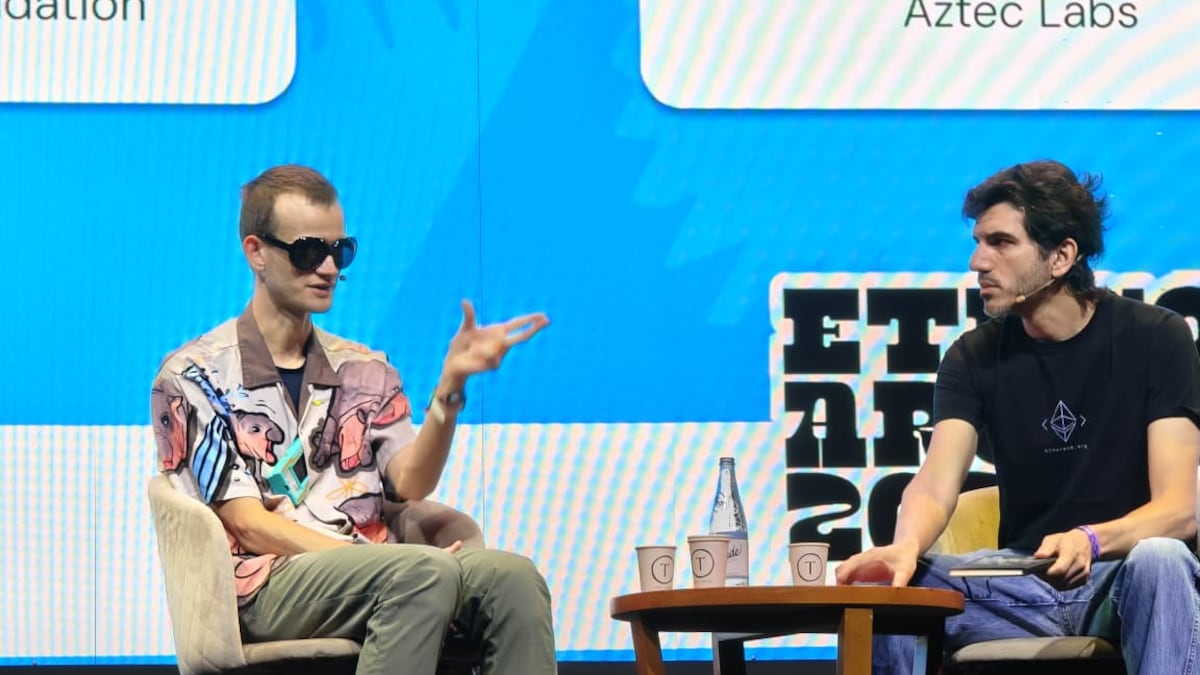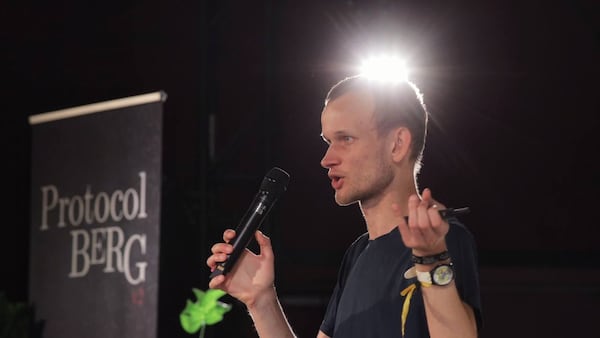- Vitalik Buterin says Ethereum should embrace ossification over time.
- The co-founder wants innovation to move to layer 2s, not the base layer.
- Elliptic curve cryptography could break before the next US presidential election, he warned.
Vitalik Buterin wants Ethereum to stop changing.
Speaking at the Devconnect conference in Buenos Aires, Buterin openly declared that the blockchain’s base layer should ossify — locking down core features to prevent changes that could introduce bugs into the ecosystem.
“More and more ossification over time is good for Ethereum,” Buterin told the packed auditorium. “We have a much lower rate of surprises now.”
Hanging on his every word, the crowd of over 500 listeners murmured at the idea.
That’s because Buterin’s words are a sharp turn for a protocol built on flexibility and experimentation.
Indeed, for years, Ethereum’s ability to change was its main selling point — developers could build anything, and the protocol itself would evolve to support new use cases.
Now, Buterin reckons that stability matters more than adaptability. A locked-down base layer might be less exciting, but it’s also less likely to break.
And for a network securing hundreds of billions in value, perhaps boring is a feature, not a bug.
Ossification isn’t binary
Buterin argued that Ethereum can ossify different layers at different speeds.
The consensus layer could lock down changes while the Ethereum Virtual Machine remains openly flexible. Or vice-versa.
“It’s good to maintain some flexibility,” he said.
The goal isn’t to stifle or kill innovation but to redirect it away from the base layer and into the surrounding ecosystem. That means layer 2 rollups, wallets, privacy tools, and user-facing applications — not fundamental protocol changes.
Layer 2s already handle most of Ethereum’s transaction volume. The more activity that moves there, the more space opens up on layer 1 for settlement and security.
“It’s healthy to move attention out of L1 and into the surrounding ecosystem,” Buterin said.
The cost of maturity
But Buterin admitted the shift comes with tradeoffs.
Ethereum’s early days had a “spirit of exploration” that has largely disappeared as the ecosystem took unsavoury turns with the surge of memecoins, and simultaneously maturing with the arrival of institutional players.
“There is too much of the space that has gone in the direction of ‘if you want to succeed, be a fast follower and copy what’s already working,’” he said.
“It harms the imagination of the space.”
Quantum computing looms
Towards the end, Buterin issued a stark warning.
Elliptic curve cryptography, the foundation of Ethereum — and Bitcoin’s — security, won’t last forever.
“Elliptic curves are going to die,” he said, pointing to a prediction that the ability of quantum computing to break Ethereum’s underlying security model could come before the next US presidential election in 2028.
That gives Ethereum roughly four years to migrate to quantum-resistant cryptography — a timeline that assumes quantum computers advance on schedule.
It’s the kind of existential technical challenge that will require coordination across the entire ecosystem. But if Buterin’s vision holds, those changes will happen at the edges — not in Ethereum’s increasingly unchangeable core.
Pedro Solimano is DL News’ Buenos Aires-based markets correspondent. Got a tip? Email him at psolimano@dlnews.com.






